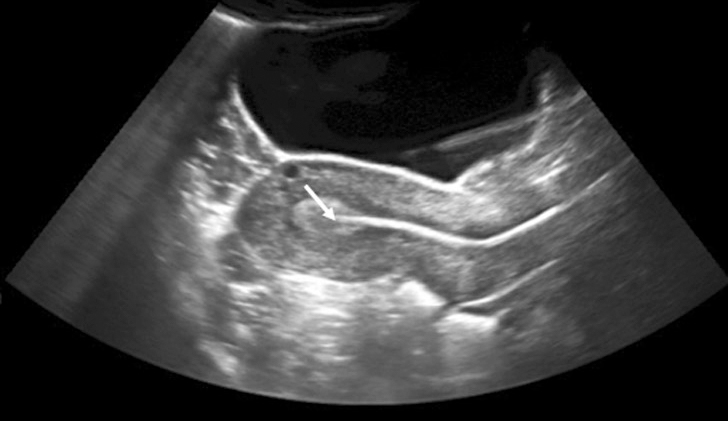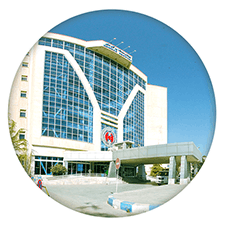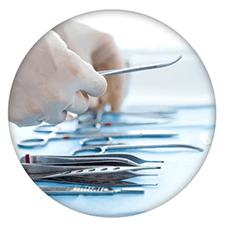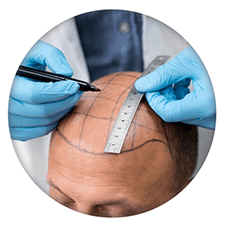Embryo Transfer in Iran

Embryo transfer is an essential step in the process of IVF (in vitro fertilization). During this procedure, embryos are inserted into a female patient’s uterus to start a pregnancy. It is a step in the assisted reproduction process. This procedure, which is frequently used in conjunction with in vitro fertilization (IVF), may be utilized on humans or animals, depending on the circumstances. This article only focuses on the embryo transfer conducted for people with a specific purpose.
As the final step in the IVF procedure, the fertilized egg, which has been allowed to develop for a few days, is transferred into the woman’s uterus; it will ideally implant, develop into a baby, and lead to the delivery of a healthy child. The endometrial receptivity, embryo quality, and embryo transfer technique are all aspects that can determine how well this medical course goes. Embryo transfer can be done on day two, day three, or even later in the blastocyst stage.
Surgeons employ various tools and innovative technologies to receive a higher success rate in embryo transfer, leading to different medical methods. Fresh, frozen, cleavage, blastocyst, single, and multiple embryo transfers are a few of the numerous varieties of embryo transfers. When making a new transfer, this often happens between 3 and 5 days following egg extraction, and when doing a frozen transfer, it can happen anywhere between 4 weeks and years afterward.
Currently, transferring one embryo (or infrequently two) at a time is the norm. It reduces the likelihood of multiple births while keeping the cumulative live birth rates (per retrieval from an IVF cycle) constant. If the first transfer involves a fresh embryo, any remaining seeds from the IVF round may be frozen.
Due to the required medical knowledge and necessary equipment, Embryo transfer is considered an expensive procedure with a low probability of success if performed inaccurately. As a result, the candidates must seek various alternatives to find a medical program that suits their conditions and ensures a high success rate. In this situation, some couples consider particular choices like undergoing embryo transfer in Iran; many experienced surgeons are in service in the equipped hospitals of this country to ensure candidates a safe and successful transfer offered at an affordable price. Happy Green Life medical provider can assist you in this case to experience a managed medical journey in Iran that leads to a successful outcome.
What is Embryo Transfer?
The final stage of IVF involves embryo transfer. A set of intricate treatments known as IVF, or in vitro fertilization, are used to help with fertility, prevent genetic issues, and aid in child conception. IVF is the most successful procedure considering various ways of assisted reproductive technology. In this medical course, mature eggs are removed from ovaries and fertilized in a laboratory using sperm. The fertilized egg (or eggs) is then transferred to a uterus. The average IVF cycle lasts three weeks. The process can occasionally take longer when these processes are broken down into individual parts. The medical course is possible with the use of the couple’s sperm and eggs.
In the embryo transfer stage, the fertilized egg that has been allowed to develop for a few days is placed in the woman’s uterus, where it will ideally implant, develop into a baby, and lead to the birth of a healthy child. During embryo transfer in Iran, the egg is placed into a catheter for the transfer process, which involves inserting the catheter through the woman’s vagina and cervix and placing the embryo in the uterus. Typically, an anesthetic is not required for this surgery.
When is embryo transfer needed?
Even if the exact cause(s) of infertility may not be known, the fertility clinic and reproductive endocrinologist will work with the patient to pinpoint infertility’s root cause and determine the best way to achieve pregnancy. Doctors may suggest various medical tests and particular procedures find a successful course of treatment based on the candidate’s conditions. IVF and embryo transfer are generally required when natural fertilization is either impossible or difficult to achieve. Transferring embryos is carried out for a variety of reasons, such as:
- Impaired sperm production:
Natural fertilization may not succeed in men for a variety of reasons, including inadequate sperm production, poor sperm motility, damage to the testicles, or abnormalities in the semen.
- Ovulation disorders:
Fewer eggs are available for adequate fertilization if ovulation occurs infrequently.
- Genetic disorders:
It is known that some genetic abnormalities can inhibit conception.
- Damage to Fallopian tubes:
The Fallopian tubes are where the embryos pass before they enter the uterus. If the pipes get damaged or scarred, fertilized eggs have trouble reaching the womb safely.
- Uterine fibroids:
Fibroids are tiny, benign tumors that develop on the uterine wall. They may obstruct an egg’s ability to implant in the uterus, ending the possibility of conception.
- Endometriosis:
It happens when uterine tissue implants and spreads outside the uterus; this may impact the female reproductive system.
Embryo Transfer risks and precautions
Transferring embryos holds minimal risk in and of itself. These concerns are mainly brought about by increased hormone stimulation, which raises the possibility of blood clots obstructing blood vessels. Additionally, if anesthesia is used, the woman may develop infections, changes in her vaginal discharge, bleeding, and anesthesia-related problems. Miscarriage risk is comparable to that of natural conception.
The possibility of multiple pregnancies is the most significant danger associated with embryo transfer. This happens when numerous distinct embryos connect to the uterus. It is more common in pregnancies resulting from IVF than those resulting from natural conception, and it may raise the chance of stillbirth and infants born with impairments. Still, these risks may be controlled and minimized under the hand of a good doctor.
Different types of embryo transfer
In most cases, doctors use the same procedure to retrieve and fertilize the eggs during IVF. These steps happen before performing the final step, which is transferring the fertilized egg into the womb. Embryo transfer may be performed using a method selected from several options. The hospital’s equipment, the ability of doctors, and the candidate’s conditions influence the chosen method. Due to equipped medical clinics in this country, embryo transfer in Iran is performed in several ways, including:
Fresh embryo transfers (ETs)
As the name suggests, a fresh embryo transfer involves the transfer of an embryo or embryos that have not been frozen. During this procedure, the fertility specialist will decide which sources have the best chance of implanting after the expectant mother’s eggs have been collected and fertilized. The gynecologist will place the newly developed embryos back into the expectant mother’s uterus three to five days following the first retrieval.
Frozen Embryo Transfer (FET)
IVF and ICSI cycles typically yield numerous eggs for insemination, resulting in multiple viable embryos being formed. If the first transfer does not lead to a pregnancy, the remaining eggs can be saved and used in a subsequent IVF cycle or to create a sibling. Any healthy embryos left over after the initial transfer that wasn’t used can be frozen and kept for later use. Embryos that have been cryogenically frozen can also be used as donor embryos.
FET happens if the lining of the uterus is not sufficiently developed or if the candidate is in danger of developing the ovarian hyper-stimulation syndrome. In this case, a woman undergoing IVF in Iran may be recommended to freeze all her embryos and not immediately transfer them. For this reason, it’s becoming more typical for a fertility professional to advise freezing all of a woman’s embryos so that they can be implanted more naturally later in her cycle when her body is more conducive to getting pregnant.
Cryopreserved embryos have consistently produced healthy offspring with no reported increase in birth malformations or developmental abnormalities. It is true whether fresh or frozen eggs are utilized for intracytoplasmic sperm injection (ICSI). Compared to embryo transfer during the same cycle as ovarian hyperstimulation, pregnancy rates are higher after FET, and perinatal outcomes are less impacted. Frozen embryo transfer is available to concentrate on increasing the likelihood of successful implantation because it is thought that the endometrium is not ideally prepared for implantation after ovarian hyperstimulation.
Cleavage Stage Embryo Transfer
Embryos in the cleavage stage are so termed because while their cells are dividing (or cleaving), the embryos themselves are not expanding in size. This stage can occur on days two or four, but it typically happens around day three. The term “day three embryos” is frequently used to describe them. Some fertility specialists feel that since there is no substitute for a woman’s uterus, embryos should be returned to it as soon as possible. Transferring on Day 3 is a strategy to ensure the best environment for growth because not all seeds survive until Day 5.
Blastocyst Stage Embryo Transfer
A blastocyst is an embryo that has formed into a single-layered sphere of cells that surrounds a cavity filled with fluid and contains a dense mass of cells arranged in a cluster. Blastocysts can have between 60 and 120 cells. This procedure typically happens on day five, although it could also happen on day 6, day 7, or day 8. In this phase, the embryo has differentiated into two distinct cell types:
- The placenta is made up of cells called trophectoderm; they are found on the edge of the embryo;
- the inner cell mass (ICM) is a thick mass of cells on the inside that develops into the fetus if the embryo implants.
Since a blastocyst embryo has a higher chance of being genetically normal than a cleavage-stage embryo, it is regarded as more “special” than an earlier-stage embryo. An embryologist is better equipped to choose seeds with a higher chance of continuing development by delaying embryo transfer until the blastocyst stage. Before transferring, a blastocyst-stage embryo can also be genetically examined, which may assist in lowering the chance of miscarriage, avoiding known hereditary diseases, and choosing the sex of the kid.
Single Embryo Transfer
A single embryo transfer involves inserting just one embryo into a woman’s uterus. With a relatively equal probability of pregnancy, this provides a lower chance of multiples. The eSET method has swiftly taken the lead as the best method for transferring embryos during an IVF process due to its lower risk and comparably high conception rate.
Multiple Embryo Transfer
Transferring more than one embryo is known as transferring several embryos. This can increase the chances of multiple pregnancies and is usually advised for mothers above 40, or in the case of surrogate mothers.
Preparing for the embryo transfer
To increase the odds of a successful transfer, candidates can take care of several things that lead to a successful outcome prior to the embryo transfer. Since eggs enter their final development phase about 90 days before ovulation, most of these alterations are most effective if implemented 30 to 90 days before the beginning of the stimulation phase of the IVF cycle. It promotes egg growth and helps you get the highest-quality eggs available for your treatment cycle, contributing to 50% of the genetic makeup of developing embryos. Candidates should Speak with their reproductive endocrinologist for detailed information on how to get ready for the embryo transfer. Below, these suggestions are categorized into three stages:
Supplementation & Diet
A high-fat, low-carb diet decreases inflammation throughout the body, including the digestive tract and the reproductive system. Since many female hormones are created from cholesterol derived from fat, it also helps with hormone function. Besides, Both men and women can benefit significantly from taking a variety of reproductive supplements, such as co-q10/ubiquinol, inositol, vitamin D, and many others. Fortunately, a few companies have condensed the several suggested elements into a straightforward few goods in case of a perfect pregnancy.
Medical Prescriptions
Different immunological drugs can aid in improving transfer outcomes, especially if there has been a history of unsuccessful implantation. The doctor may suggest you take some helpful drugs after checking your condition and the result of medical tests; Some immunological medications used in these situations include:
- Prednisone Aspirin (over the counter);
- Lovenox;
- hCG;
- IVIG;
- Filgrastim (Neupogen);
- Viagra Antihistamines (over the counter);
- Metformin Orilissa;
- Intralipids;
- low dose naltrexone;
- HGH;
- Antibiotics;
- Tacrolimus (Prograf).
Further preparations
Medical professionals may suggest additional procedures before the IVF and embryo transfer to reduce any possible problems and ensure success. They are varied in every case and depend on several conditions. Below, you may get to know some of them but remember that your professional may suggest these treatments if necessary to experience a flawless embryo transfer in Iran.
- Massage:
Massage techniques, created expressly to treat infertility, can be used to promote fertility by boosting blood flow to the reproductive organs, removing obstructions, and reducing inflammation. Additionally, it can assist in reshaping the uterus and relieving the stress and anxiety frequently connected to infertility.
- Yoga:
Yoga can help by lowering stress levels, increasing blood flow to the reproductive organs, and regulating the immune system.
- Endometrial Biopsy:
Before the menstrual cycle of the month candidate wants to undergo the transfer, the doctor may suggest an endometrial biopsy or a scratch technique. The endometrial lining can be “scratched” to produce cytokines, which aid the healing phase of the IVF procedure. This mending process might support more significant lining formation in the following months.
- Intra-uterine hCG:
Injecting Human Chorionic Gonadotropin, or hCG, into the uterus before the embryo transfer stage boosts the chances of implantation by up to 30%. As part of the procedure for embryo transfer, several medical clinics recommend using 500 IU of intrauterine hCG to help jump-start the implantation process.
- Lymphocyte Immunization Therapy (LIT):
During a LIT, white blood cells from the father-to-be are extracted from his blood and injected under the skin of the prospective mother to introduce the husband’s immune cells to the woman’s immune system in preparation for pregnancy. Lymphocyte Immunization Therapy is frequently advised following numerous unsuccessful IVF cycles and possible immunologic causes of poor implantation.
- Platelet Rich Plasma (PRP) Therapy:
PRP, a concentrated platelet-rich blood product, can be performed to promote ovarian or egg function as well as to increase endometrial thickness and receptivity. It tends to encourage healing and tissue growth.
- Endometrial Receptivity Analysis (ERA):
To determine a woman’s endometrial receptivity (how likely it is that an embryo will bond), a test called endometrial receptivity analysis is performed. The purpose of the test is to determine each woman’s particular and ideal window of implantation in order to assist prevent implantation failure.
- Laparoscopy:
A laparoscopy is a minimally invasive surgical procedure used to detect and treat endometriosis, uterine fibroids, abnormal growths, and adhesions. It happens by viewing the interior of the abdominal and pelvic cavity.
- Hysteroscopy:
A hysteroscopy is a minimally invasive diagnostic and corrective treatment used to access the uterus. This test is implied to investigate and, if necessary, treat the suspected causes of infertility and miscarriage or irregular uterine bleeding.
Embryo transfer procedure
Candidates should know What to expect before, during, and after an embryo transfer in Iran to be confident and relieved as the procedure takes place. Embryo transfer is introduced as one of the vital stages in the IVF process that involves putting the fertilized egg(s) into the uterus. So, it is followed by several stages of IVF, such as egg fertilization.
Before the procedure
After fresh egg retrievals, the embryo transfer will occur three to five days later or longer if you’re using stored embryos. Although non-invasive techniques like metabolomic profiling are being investigated, various processes can help with selection. Choosing the healthiest eggs based on a variety of different happens in this stage. In the future, this might reduce the necessity for invasive operations. After being fertilized in a lab, these eggs will be cultivated for a day or two. If many high-quality embryos are created, the ones that won’t be transferred can be frozen.
During the procedure
The woman’s experience with the embryo transfer process is comparable to a Pap smear. There should be little discomfort and no need for sedation or other medications. Doctors usually use a bladder about half full for embryo transfer. It is beneficial in two key ways. It unfolds the (anteverted, “tipped up”) uterus to a more accommodating angle, making the process smoother and less stressful for the uterine lining and the embryos. This also assists with the smooth and proper transfer of the seeds to the optimal location.
The embryos are placed inside the embryo transfer catheter, which the doctor inserts through the cervical opening and into the center of the uterine cavity. Simultaneously, abdominal ultrasonography tracks the catheter tip’s advancement to the appropriate spot. Although it can be challenging to always keep the catheter tip in the exact plane of the ultrasound beam, it is crucial to ensure that the embryos are positioned correctly.
The infertility specialist doctor then “transfers” (squirts out of the catheter) the embryos to the lining of the uterine cavity (endometrial lining) once the catheter tip has reached the desired spot. The catheter is progressively removed after the sources have been implanted, and any remaining embryos are examined under a microscope. The transfer technique is immediately resumed, and the catheter is checked once more to see if an embryo is retained in the catheter.
Research has been conducted to find the best spot for the embryos in the uterine canal. In general, the optimum location is in the middle of the endometrial cavity, halfway between the internal os of the cervix and the uterine fundus (top of the cavity). It is essential to take precautions to prevent the catheter from dissecting beneath the endometrial surface and keeping it between the top and bottom layers of the endometrium.
How does Frozen Embryo Transfer Work?
Desynchronization can be avoided using FET. Pregnant women may have a better chance of getting pregnant if they postpone Embryo Transfer in Iran until a later cycle. IVF embryos are generated and frozen rather than implanted while the body is still healing. The embryos are frozen and will be planted once the patient’s body has had a chance to recover from the stress of the IVF process and has returned to a more common cycle. Choosing the gender of a child is also possible with this method through PGD and PGS. Couples may desire to do so for many reasons, including ensuring a balanced representation of the sexes. Embryos are generated, sampled, tested, and frozen throughout the first cycle. A Frozen Embryo Transfer in Iran will be performed once the biopsy findings are in and the female partner has recovered from her egg retrieval.
After the procedure
Results Of Embryo Transfer
While taking a pregnancy test a few days after an embryo transfer in Iran may be tempting, most fertility clinics do not recommend it. By waiting the customary two weeks, you can be sure that you will receive reliable results and be able to handle normal emotions during this time. Because performing a pregnancy test too soon after the embryo transfer frequently yields erroneous results, clinics advise a two-week wait. It occurs because your present stage in your fertility journey can affect the level of the hormone called hCG that is used to measure pregnancy in a pregnancy test. In the case of early pregnancy, for instance, there is frequently little natural hCG production, leading to a worrying false-negative result.
Candidates can use their first post-embryo transfer pregnancy test after two weeks have passed. The fertility clinic will arrange a visit two weeks following the transfer to carry out a blood test to determine the pregnancy outcome to obtain a more accurate evaluation. Pregnancy bleeding or spotting can occur in some women before taking a pregnancy test. If you have been taking medication, you must continue to do so until you speak with your fertility doctor.
How many embryos should be transferred?
Many parents wonder if transferring numerous embryos boosts the possibility of conceiving successfully. Since every fertility clinic has a distinct policy on the number of embryos placed into the woman’s uterus, there isn’t a single correct response to this query. Your fertility doctor may just implant one embryo into the uterus, while For women over 35, sometimes transferring two embryos can improve the likelihood of successful implantation. The age and reproductive history of the embryo recipient are among the factors that affect how many embryos should be transferred.
According to some statistics in the U.S., transferring two embryos accounted for 50% of IVF procedures, three embryos accounted for 23%, and four or five embryos accounted for 10%. Multiple embryo transfers can lead to more live births, but they also raise the risk of medical issues for both the intended mother and the baby. Less and less multiple embryo transfers are performed as medical technology and methods advance. The intended parents noticed the most remarkable improvement in success rates while performing preimplantation genetic testing and diagnosis instead of increasing the number of embryos transferred during IVF. The possibility of a successful cycle is increased thanks to these tests, which enable the fertility specialist to assess and determine which embryo(s) have the best chance of implantation and healthy pregnancy. Doctors may offer these procedures if necessary during an embryo transfer in Iran.
Frozen and fresh embryo transfers: benefits and risks
There are several factors to consider when determining whether to use fresh or frozen embryos. Both have advantages and disadvantages. Before an embryo transfer in Iran, the physician may assist you in finding the method that suits you the best; it usually happens by evaluating the candidate’s medical conditions by undergoing particular tests and reviewing their medical history.
Fresh embryo transfer: pros and cons
The quicker time to conception is the primary advantage of using a fresh embryo transfer. After the egg retrieval and embryo transfer, the maximum waiting period is five days. Patients also choose fresh transfers due to the lower likelihood that insurance companies will pay for the expense of embryo cryopreservation or freezing.
For those who are considering fresh transfers, there are limitations. A fresh embryo transfer would probably fail if a woman’s progesterone level were high because of the circumstances surrounding embryo implantation. Additionally, fresh transfers should be avoided by patients at risk for OHSS because the drugs used to enhance egg maturation can be hazardous.
Frozen embryo transfer: pros and cons
Transferring frozen embryos is usual, and many IVF clinics encourage patients to do so. A patient does not require a second egg retrieval to produce embryos if there are extra embryos from a recent round. Intended parents can decide to perform a FET cycle after an unsuccessful IVF cycle at any time because frozen embryos stay viable for over ten years after their initial freeze. The most significant advantage of this method is that, unlike fresh transfers, frozen transfers allow for genetic testing of the embryos before implantation, improving success rates and reducing the likelihood of congenital disabilities.
Embryo Transfer in Iran
Interested couples find a fair IVF treatment plan as one of their last chances to have their own biological kids. Various medical providers offer these treatments (IVF and its stages, such as embryo transfer) under certain circumstances around the world. Embryo transfer in Iran recently became a trend due to its merits over other options. You can enjoy equipped Iranian hospitals and experienced surgeons that are in service in this country. These programs are offered more affordable than other programs in Europe and America. Candidates can also rely on a successful embryo transfer in Iran with Happy Green Life; this medical provider assists interested candidates in finding their suitable program and tend to undergo them during a convenient trip to Iran.
You can always have access to all our services in one place, Click here!
































